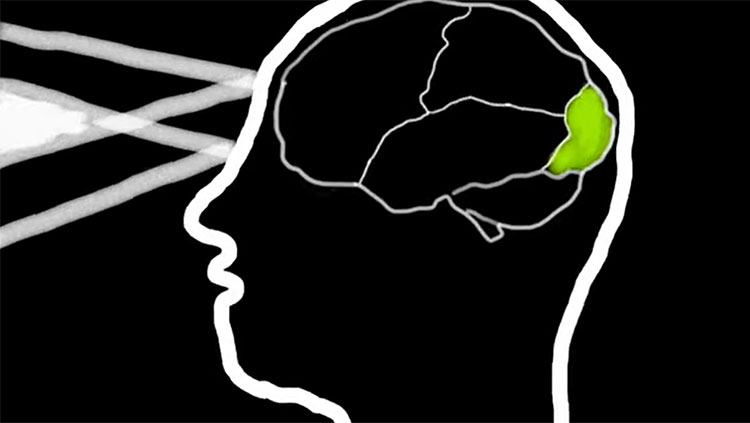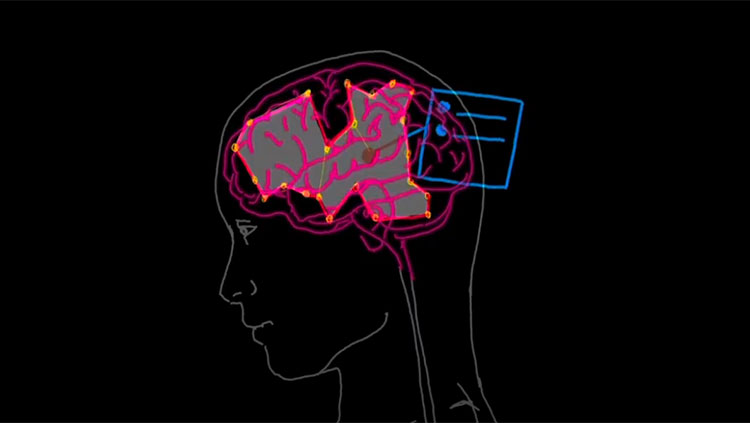Can Your Computer Read Your Mind?
- Published11 Oct 2022
- Source BrainFacts/SfN
Reading minds may seem like science fiction. But by eavesdropping on specific connections in the brain, scientists can translate certain signals into text, speech or even movement using brain-computer interfaces. Those brain recordings also drive neuroprosthetics, which use signals in the brain or other nerve cells to move a robotic prosthetic in real time. In addition to translating signals in the brain, scientists are studying how bioelectric medicine can stimulate the nervous system to communicate with other systems in the body, an approach that one day may be used to treat certain diseases.
This is a video from the 2022 Brain Awareness Video Contest.
Created by Kiara Quinn.
CONTENT PROVIDED BY
BrainFacts/SfN
Transcript
You have probably seen movies or read books about a future where robots could read minds, or characters could control things just by thinking about them. But will these futuristic advancements ever become a part of our reality, or are they just a thing of science fiction? Neuroscientists, who study the body’s nervous system, might have the answer.
When you think of the nervous system, the first thing that probably comes to mind is the brain. But the nervous system is also made up of the spinal cord and nerves that connect the brain to every part of the body, such as the heart, lungs, stomach, intestines, liver, and muscles.
You can think of the brain as the conductor of an orchestra or the coach of a sports team. It sends signals to the rest of the body to make sure everything works together to keep us healthy. It controls how we move through the world, how we think, and how we feel.
The brain communicates to the rest of the body using both electrical and chemical signals. It does this by using tiny cells called neurons that make up the nervous system. Neurons pass chemical messages to one another at a junction called a synapse. This generates an electrical signal that travels along a neuron’s axon. This electrical signal has a special term called ‘action potential.’ Sometimes neuroscientists will also refer to this event as a ‘spike’ or say that the neuron is ‘firing.’
We can use electrodes to ‘listen to’ these spikes and interpret what the brain is thinking. This can help individuals who have been paralyzed. Their brain can still ‘think’ about moving, but the connection between their brain and their body might be damaged, so the message never actually reaches the muscles in their arm or leg. Instead, researchers can place electrodes on the premotor cortex, one part of the brain that controls movement, to decipher what the brain is trying to say.
If a person thinks about writing the word ‘hi’, we can use brain recordings to translate that thought and type the word ‘hi’ on a computer. This technology is called a brain-computer interface or sometimes is known as a brain-machine interface. In addition to typing words on a computer, we can also use the brain to control physical objects like wheelchairs or robotic limbs. For people who have lost a limb, their connections are intact. But they no longer have a limb to move.
Scientists can use recordings from the brain, spinal cord, or even peripheral motor nerves to find out when the person wants to bend their elbow and then can use that information to bend a replacement robotic limb in real time. These robotic limbs are often referred to as neuroprosthetic limbs. Some neuroprosthetics are so advanced that people have even learned to do tasks as complicated and intricate as playing a song on the piano just how they would with a normal hand.
On top of just listening to the nervous system, we can also speak back to it! Remember how one neuron sent chemical messages to a second and it generated an action potential along the axon? We can achieve a similar effect by using electrical stimulation to trigger the action potential. This has inspired a field called bioelectronic medicine. Instead of using chemical-based drugs to treat diseases, we can use electricity.
Earlier, we said the brain is connected to every organ in the body. This means that we can treat a wide range of diseases affecting the whole body just by communicating with the nervous system. For example, in autoimmune diseases such as rheumatoid arthritis, the body’s immune system is hyperactive and mistakenly attacks healthy parts of the body, causing painful inflammation of joints. Drugs are currently used to suppress the immune system, but stimulating the nervous system has also been shown to be good at regulating the immune system, potentially with less adverse side effects. The possibilities don’t stop there — in the future we could use bioelectronic medicine to treat diabetes, epilepsy, certain cancers, and so much more.
We started this video asking the question, “could technology in science fiction really become a reality?” Well, the answer is some of it already is. But we have only just scratched the surface of what is possible. Before we can drive cars with our mind or cure diseases with a smartphone app, there is still a lot to learn about the nervous system. The brain is the most complicated organ in our body and there is still so much more that we don’t know about it. In fact, it is estimated there are 86 billion neurons in the human body. To give you an idea of how many that is, it is over 10 times the world population.
It is going to take a lot of research to understand what each of those neurons do and how they connect to one another. But with the help of future neuroscientists, doctors, and engineers like you, the possibilities are endless.
Also In Thinking & Awareness
Trending
Popular articles on BrainFacts.org

















